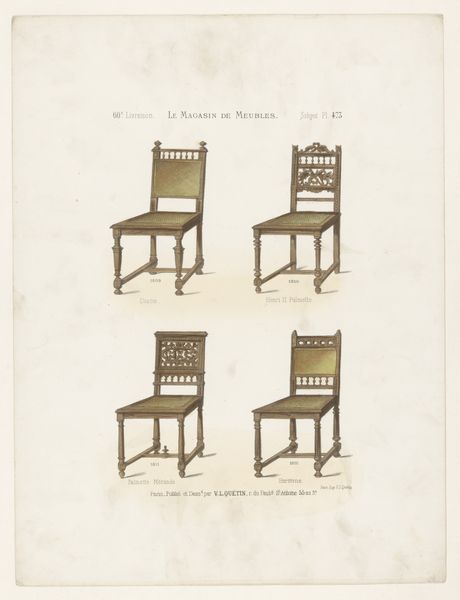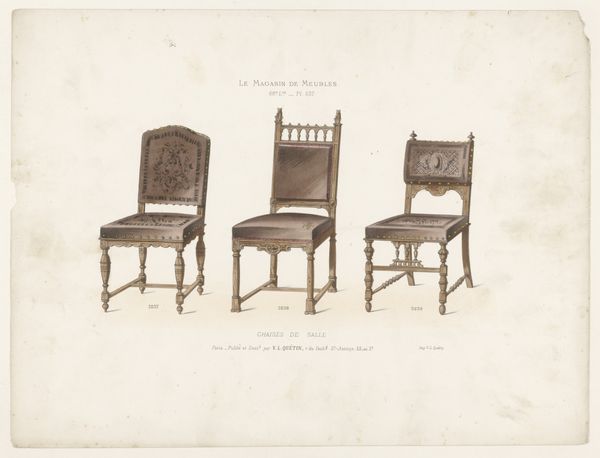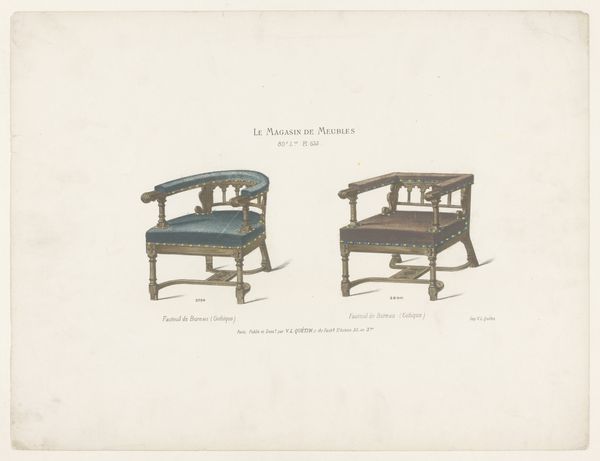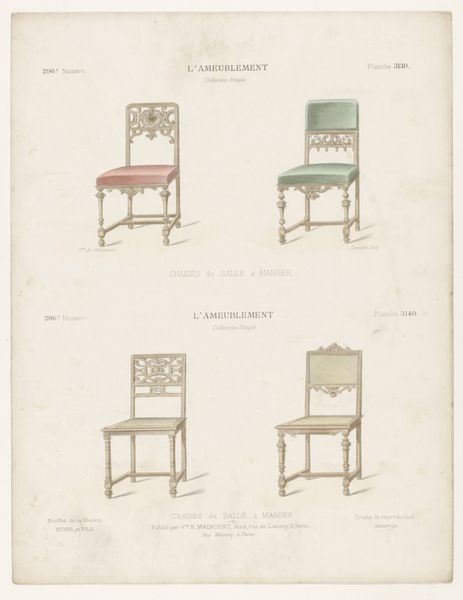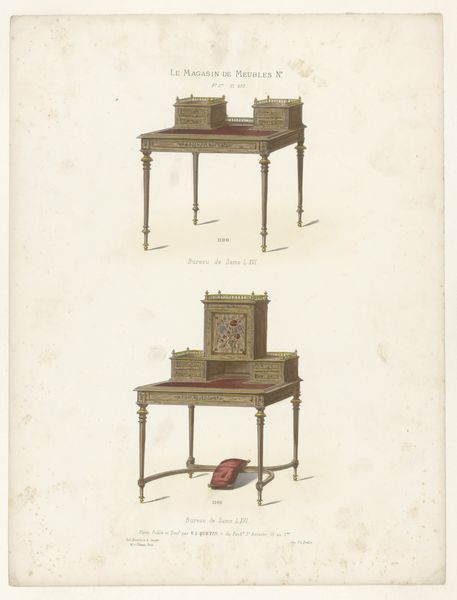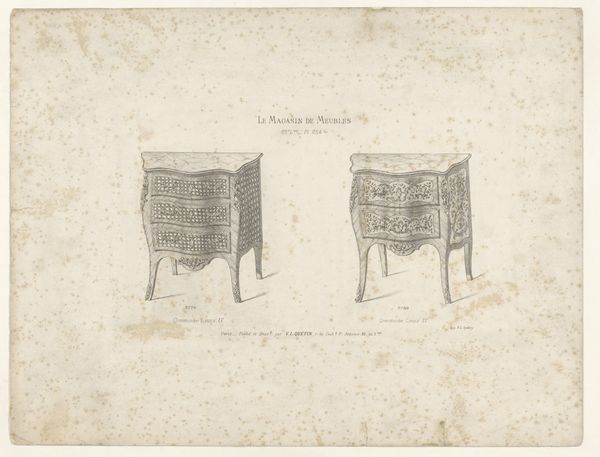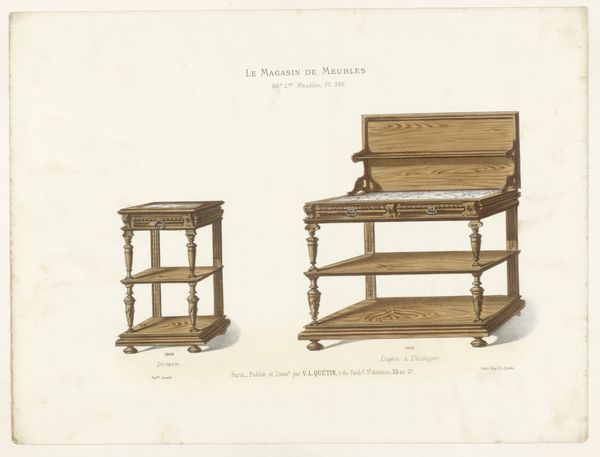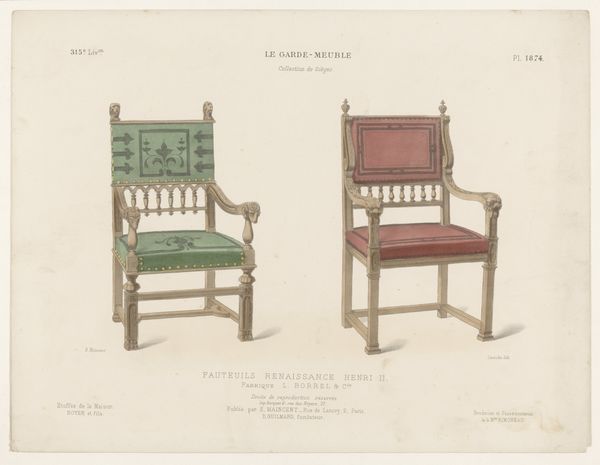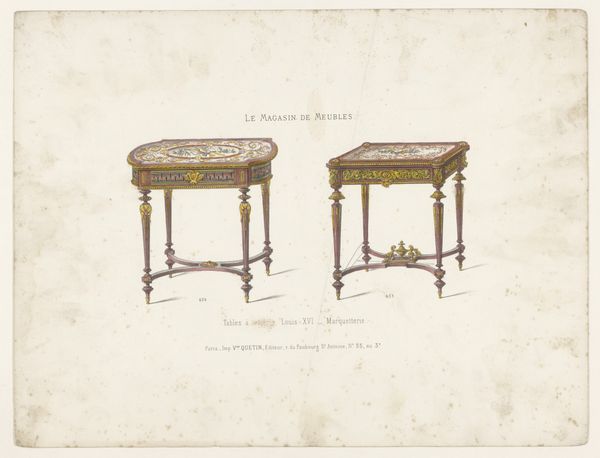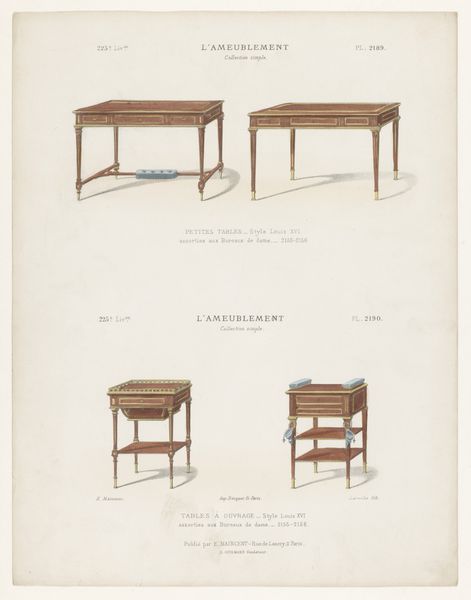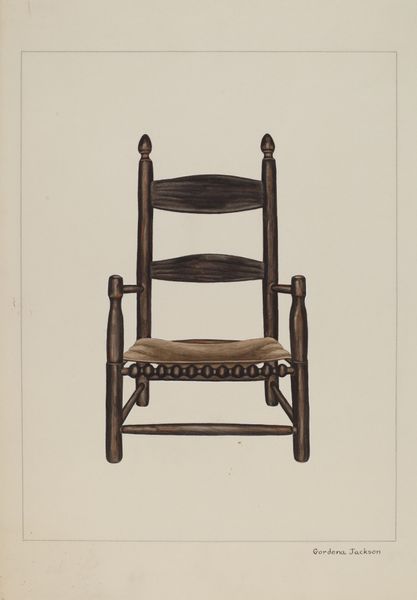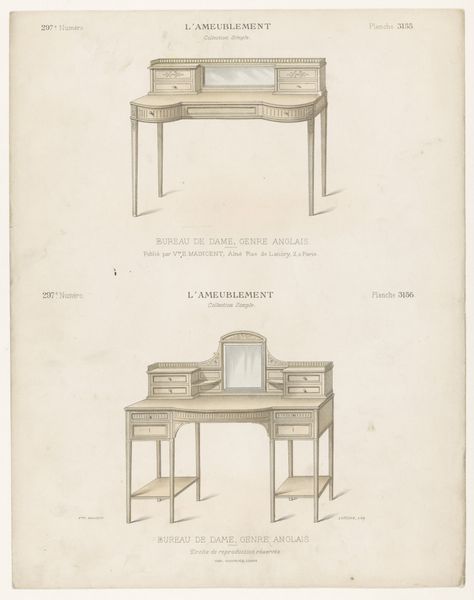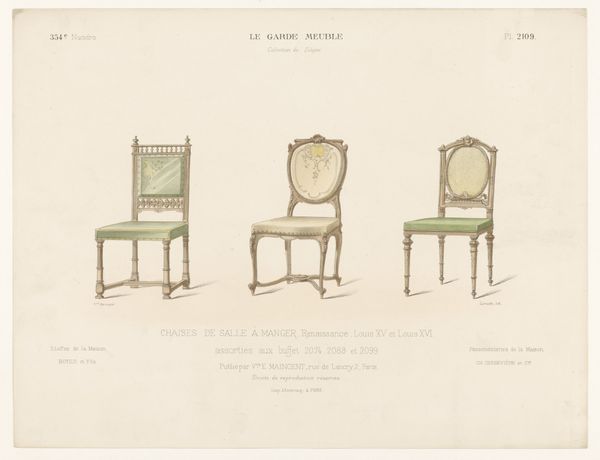
drawing, print, poster
#
drawing
# print
#
decorative-art
#
poster
#
realism
Dimensions: height 274 mm, width 356 mm
Copyright: Rijks Museum: Open Domain
Curator: Let's look at "Drie Stoelen" from after 1878. It seems to be a print, maybe a poster or a drawing, showcasing three distinct chair designs. What grabs you about it initially? Editor: Well, I notice they are chairs, but quite elaborate, displayed in this very simple way. They feel almost like products in a catalog rather than individual artworks. Is there any chance they were trying to merge art with daily life back then? Curator: Absolutely. Think about the material conditions in which these objects, and indeed this image, were produced. This print blurs the line between high art and functional design. The decorative art style of this period sought to elevate everyday objects through aesthetic detailing, but within an economic system that valued mass production. It reflects a society grappling with industrialization. What materials do you think these chairs are made from and where would the producers source it from, with whose labour? Editor: They seem to be mainly wood, with maybe some fabric or leather details. Sourcing wood and fabricating these embellishments then would likely depend on skilled labor and readily available timber and textiles. Where do posters like this belong in the grand scheme of artistic expressions? Curator: Good. Ask yourself, where would those sourcing those materials from buy from? Now the print itself plays a role in material culture. Posters like this democratize design, bringing aesthetic ideals to a wider audience and promoting consumption. This poster wouldn't be hanging on the walls of fine arts museums. Its function is completely different and as such is relegated to the realm of commercial art, distinct from the "fine arts". Editor: So, we’re seeing a kind of commercial ecosystem at play, using art to push products and impacting material consumption? Curator: Precisely. It makes you wonder about the intended audience and the social dynamics shaping the demand for such meticulously designed furniture. This changes your perception of furniture from mundane objects into economic and social instruments. What implications might that suggest in terms of its artistic value? Editor: That makes me rethink my initial interpretation. Seeing the connection to production, marketing, and societal values changes everything. Thanks! Curator: Indeed! Considering art in terms of labor, materials, and circulation expands our understanding beyond the aesthetic, forcing us to consider art's relationship with commerce, accessibility, and everyday experience.
Comments
No comments
Be the first to comment and join the conversation on the ultimate creative platform.
